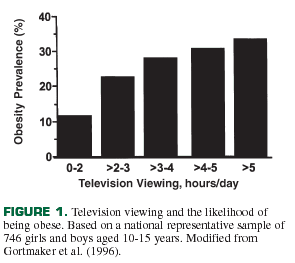xsited1
Agent P
Global temperatures have remained relatively stable from 1998 to 2008. They better start going up or Al Gore won't be able to sell anymore books.
Follow along with the video below to see how to install our site as a web app on your home screen.

Note: This feature currently requires accessing the site using the built-in Safari browser.
Global temperatures have remained relatively stable from 1998 to 2008. They better start going up or Al Gore won't be able to sell anymore books.
Global temperatures have remained relatively stable from 1998 to 2008. They better start going up or Al Gore won't be able to sell anymore books.

A quote from the article at the link:
"The globe is warming because of increasing greenhouse gas emissions. "
That looks like an unequivocal statement to me. .
The Statement
*The globe is warming, because of increasing greenhouse gas emissions.*
There has been an overall upward trend in global surface temperature since the beginning of the 20th Century. Most of the observed global warming over the past 50 years is very likely to be due to increases in greenhouse gas concentrations in the atmosphere. Greenhouse gases warm the lower atmosphere by allowing sunlight to reach the Earth's surface but trapping some of the infrared radiation emitted by the Earth. Human activities have increased the concentrations of carbon dioxide, methane and nitrous oxide since the mid-1700s. More than half of the carbon dioxide concentration increase has occurred since 1970.
Human activities have also increased concentrations of aerosols (small "air pollution" particles) in the atmosphere. These may have partially offset the heating effect of the greenhouse gases by scattering some sunlight back to space.
*Natural factors also cause climate variations.*
Climate has always varied, over timescales of decades, centuries and millennia. Until recently these variations have had only natural causes – including changes in the tilt of the Earth's axis, the shape of the Earth's orbit, the energy output from the sun, dust from volcanic emissions, and heat exchanges between the atmosphere and the ocean (such as El Niño). This natural variability still occurs in addition to the human influences. Thus while the overall decade-to-century temperature trend is upwards, individual years can still be warmer or cooler than previous years.
*Further global changes are predicted. Many impacts are expected to be more costly as time progresses.*
Even if the concentrations of all greenhouse gases and aerosols were held constant at year 2000 levels, a further warming trend would be expected for at least several decades, due mainly to the slow response of the oceans. Additional increases in greenhouse gas concentrations, and resulting changes in climate, will occur over coming decades unless concerted international action is taken to substantially reduce emissions. Impacts will vary regionally but, aggregated and discounted to the present, they are very likely to impose net annual economic costs which will increase over time as global temperatures increase.
I can understand how it would look "unequivocable" to you, if you cut and paste one sentence out of the whole statement.
If you actually read the entire statement in context, its a carefully crafted piece of language that fully recognizes the scope of scientific uncertainties, and the range of probabilities. A careful and accurate statement you would expect from a credible international scientific body.
OK John, keep ranting about statistics. The concern is not arcane sets of numbers, but rather the very real melting of polar caps, and alpine glaciers. Not projected melting, melting already observed. The very real concern is rising sea levels, observed rises that are already impacting aquifers in low lying areas.
Play with statistics all you want. The real science is in the observation of events in real time. Statistics are not needed to observe the affects we are presently seeing.
Play with statistics all you want. The real science is in the observation of events in real time. Statistics are not needed to observe the affects we are presently seeing.
"Real science" involves sticking to the rules with respect to statistical inference. It really does.
Play with statistics all you want. The real science is in the observation of events in real time. Statistics are not needed to observe the affects we are presently seeing.
"Real science" involves sticking to the rules with respect to statistical inference. It really does.
From a degreed physicist;
Why Tim Ball is Wrong
(c) 2007 by Barton Paul Levenson
Dr. Timothy Ball is a retired (since 1996) University of Winnipeg professor of geography, though he lists himself as "Emeritus Professor of Climatology." He is also an often-quoted global warming skeptic. One of his most famous lines is that "[T]he global temperature has declined since 1998 while human addition and levels of CO2 continue to rise." Deniers often summarize this quote as "Global warming stopped in 1998!"
Let's examine this assertion.
First of all, 1998 was an exceptionally hot year because it was an El Nino year. The choice of dating from 1998, when we actually have more than 120 years of time series data available, is called "cherry-picking," and is considered a mistake in data analysis. You can't pick out part of the data that seems to support your hypothesis, you have to use all of the data. Dr. Ball must have taken some kind of course in statistics in his years as a scientist; he must know that basing a trend on nine years of data when 120 years are available is a beginner's mistake that would get him a flunking grade in any introductory data analysis class. But let's allow his cherry-picked start date and examine the numbers.
Here are the mean global annual temperature anomalies (in hundredths of a degree) for the years 1998 through 2006, according to NASA's Goddard Institute for Space Studies:
1998 71
1999 46
2000 41
2001 57
2002 68
2003 67
2004 60
2005 76
2006 65
I entered these columns into a Microsoft Excel spreadsheet and ran a linear regression of the anomalies on the years. As expected from the small sample size, the regression was statistically insignificant (p = 0.22). But -- here's the kicker -- what trend seems to exist in the data is UP, not DOWN. The regression equation is:
Anom = -3742.577778 + 1.9 Year
I.e., on average, the temperature anomaly increased by 0.019 degrees K. each year in the period discussed. This brings up another point about statistical analysis -- you can't tell a trend from drawing a line from the starting point to the end point. That gives too much weight to "outliers" instead of weighing all the points equally. What you do is what I did -- run a linear regression. And if you do that, Dr. Ball's idea turns out to be wrong. The trend is up. Not in a statistically significant way, though it becomes very significant indeed if you run the regression from, say, 1880 to 2006. But up, not down. So global warming did not stop in 1998, and Dr. Ball, and anyone else who uses the line "Global warming stopped in 1998!" is WRONG.
9/26/2007

Old Rocks - Do you have a degree in Science and/or Mathematics? If so, can you provide us details?
Old Rocks - Do you have a degree in Science and/or Mathematics? If so, can you provide us details?
No, just a lifelong interest in earth sciences, and about three years worth of classes in geology and related fields. The highest class completed Eng. Geo. 470/570.